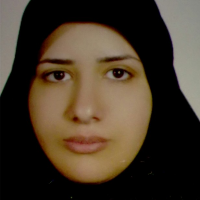Palynostratigraphy and palaeoecology of the Dalichai Formation at the Yonjehzar stratigraphic section, northeastern Tehran, central Alborz
Author(s):
Article Type:
Research/Original Article (دارای رتبه معتبر)
Abstract:
Reasonably diverse and very well-preserved palynomorphs including miospores, dinoflagellate cysts, foraminiferal test linings, acritarchs (sensu lato) and fungal spores occur in the Dalichai Formation, Yonjehzar, northeastern Tehran, central Alborz. The assemblages embrace 40 species of spores (assigned to 29 genera), 18 species of pollen (distributed among 10 genera) and 54 species of dinoflagellates (assigned to 28 genera). According to the presence of such miospores species with known worldwide stratigraphic distribution as Klukisporites variegatus, K. scaberis, Concavissimisporites verrucosus, C. pricei, Osmundacidites senectus and Striatella spp. the host strata are conceivably dated as Middle Jurassic. Based on the stratigraphic distribution of miospores, Klukisporites variegatus-Araucariacites australis-Cerebropollenites macroverrucosus Assemblage Zone is recognized. Presence of some index dinoflagellate species led to identification of four biozones in the Dalichai Formation. These include in ascending order, Cribroperidinium crispum Total Range Biozone (late Bajocian), Dichadogonyaulax sellwoodii Interval Biozone (Bathonian - early Callovian), Ctenididinium continuum Interval Biozone (early - middle Callovian) and Subzone a (early - middle Bathonian). Co-ccurrence of dinoflagellate cysts with known vertical ranges, viz., Cribroperidinium crispum, Meiourogonyaulax valensii, Carpatodinium predae, Ctenidodinium combazii and Compositosphaeridium polonicum suggests a Middle Jurassic age (late Bajocian to middle Callovian) for the host strata corroborates the available miospores-based biostratigraphy. The miospores are attributed to the Pterophyta (69%), Coniferophyta (15%), Pteridospermophyta (7%), Cycadophyta (5%), Lycophyta (2%), Ginkgophyta and Bryophytes (1%). Considering the relative abundance of fern spores (69%) and their morphological diversity (19 genera), it can be concluded that fern and fern-allies dominated the coastal vegetation around the sedimentary environments of the studied strata and that they flourished under a warm climate with notable humidity. The study of paleoclimate using the Sporomorph EcoGroups model shows a high ratio of warmer/cooler sporomorphs and a low ratio of drier/wetter sporomorphs, which is another confirmation of this type of climate. Presece of such warm water dinoflagellate cysts as Gonyaulacysta centriconnata, G. jurassica, Nannoceratopsis pellucida, Tubotuberella apatela, Ctenidodinium continuum, Pareodinia halosa, P. ceratophora, paleogeographic reconstruction and geographical location of Iran in the Middle Jurassic supports the generalization proposed.
Keywords:
Language:
Persian
Published:
Geosciences Scientific Quarterly Journal, Volume:33 Issue: 128, 2023
Pages:
259 to 282
https://magiran.com/p2590835
دانلود و مطالعه متن این مقاله با یکی از روشهای زیر امکان پذیر است:
اشتراک شخصی
با عضویت و پرداخت آنلاین حق اشتراک یکساله به مبلغ 1,390,000ريال میتوانید 70 عنوان مطلب دانلود کنید!
اشتراک سازمانی
به کتابخانه دانشگاه یا محل کار خود پیشنهاد کنید تا اشتراک سازمانی این پایگاه را برای دسترسی نامحدود همه کاربران به متن مطالب تهیه نمایند!
توجه!
- حق عضویت دریافتی صرف حمایت از نشریات عضو و نگهداری، تکمیل و توسعه مگیران میشود.
- پرداخت حق اشتراک و دانلود مقالات اجازه بازنشر آن در سایر رسانههای چاپی و دیجیتال را به کاربر نمیدهد.
In order to view content subscription is required
Personal subscription
Subscribe magiran.com for 70 € euros via PayPal and download 70 articles during a year.
Organization subscription
Please contact us to subscribe your university or library for unlimited access!




